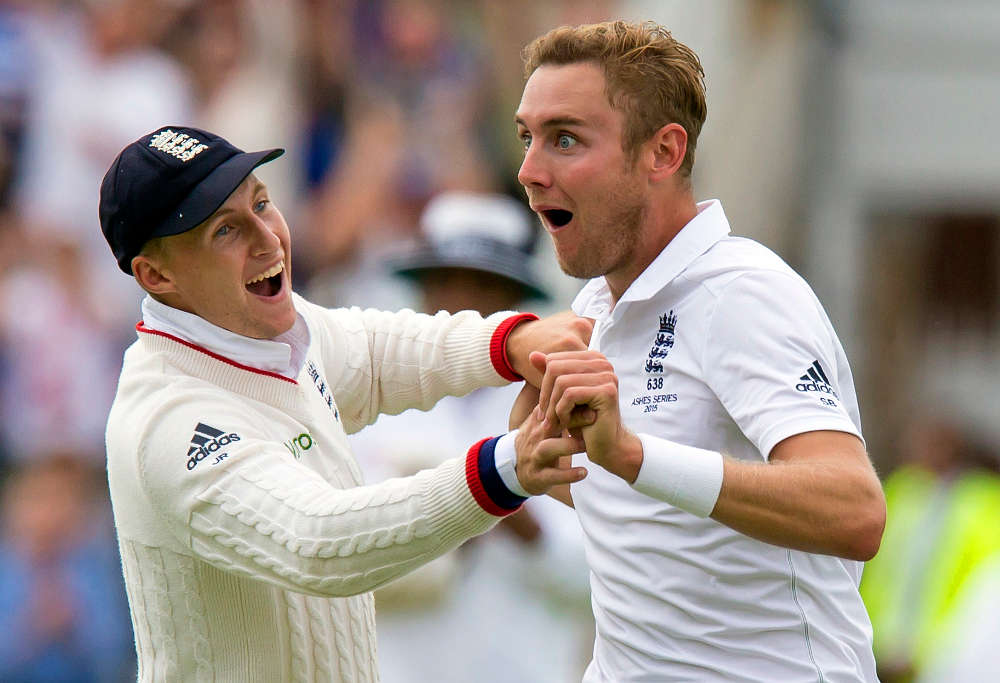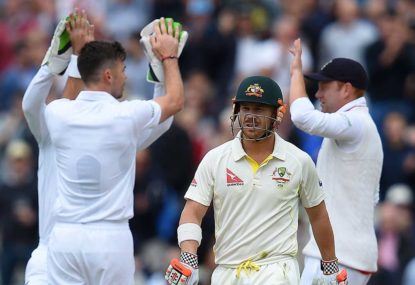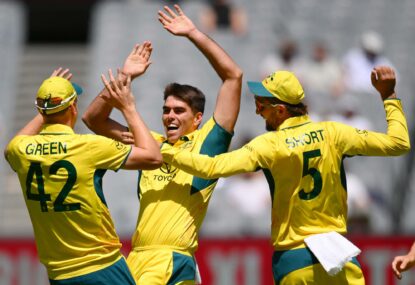When I heard that the MCC was about to introduce red cards to the venerable game of cricket, I said to myself, “What will they think of next?” And frankly, I meant it.
It just seems so alien, doesn’t it? Red cards are for soccer and rugby, for the rough boors of the various footballing pitches of the world, whose bestial natures are so unamenable to domestication that severe penalties are needed to deter the rogue boot or the maverick fist.
They are not for cricket, the gentleman’s game, where the antagonists are separated not only by the literal space between batsman, bowler and fielder, but by manners and tradition and respect for a grand, chivalrous history.
One would have hoped that red cards in cricket would never be required. Indeed, for the entire history of the game, it has been assumed that they wouldn’t be required.
Even when Douglas Jardine tried to murder everyone in Australia in the 1930s.
Even when Dennis Lillee kicked Javed Miandad and Javed threatened to decapitate Lillee in turn.
Even when the West Indies conducted a 15-year-long investigation into the effects of post-traumatic stress disorder… never did we resort to red cards.
So things must be serious. Mike Brearley, the former England captain and current chairman of the MCC’s world cricket committee, says, “I think you call [cricket] a game that you play hard and play fair. The Spirit of Cricket is represented by that. That does not include hitting someone over the back of the head with a bat or punching them.”
Well, okay, that’s his opinion and he’s entitled to it, but we don’t have to take everything Mike Brearley says as gospel, even if he was the man who discovered the psychological key to Ian Botham’s baffling brain. I mean, what if the spirit of cricket does include hitting someone over the back of the head with a bat or punching them? I admit I don’t feel like it is, but in my own cricket career I’ve never actually hit anyone over the back of the head with a bat, so I can’t be sure that if I did, I wouldn’t suddenly feel infused with the spirit of cricket and finally understand to some extent what it meant to be WG Grace.
On the other hand, I have punched people, and it didn’t feel very Spirit-of-Crickety, but that might have been because I was playing rugby at the time.
But okay, let’s grant, for the sake of argument, that it’s probably not that great a thing if players of a game involving the use of large blocks of wood start feeling they have licence to use them as weapons. The depressing thing is that this has obviously been happening at a frequency necessitating action at the highest levels. I’m not saying there’s been an epidemic of bat-bashings, but there doesn’t need to be an epidemic: even a minor localised outbreak is enough to cause real concern, due to the extremely significant nature of each individual bat-bash.

And red cards are definitely a good way to deal with them – if I ever get hit with a bat on the field I want that fellow given his marching orders quicksmart, and if I ever hit anyone else with one I regretfully admit I deserve the same treatment – but we have to look at root causes. Why do players do this?
The automatic response is always to blame the elite. Monkey see monkey do, as they say, and we assume that misbehaving clubbies are just imitating what they see on TV. One might reason that when players behave appallingly in the Big Bash, you can’t blame lowlier players for going the big bash.
The trouble with this – besides the abrogation of personal responsibility and the concomitant assumption that club cricketers are woefully stupid – is that in the Big Bash, or the Ashes, or the Chappell-Hadlee Trophy, or whatever all the weird Pakistan series are called, nobody is hitting anyone with their bats.
You might learn a lot of bad habits from David Warner, but wrapping the Kaboom around Umesh Yadav’s face isn’t one of them. At the very worst you could accuse Davey of influencing club cricketers to punch the most annoying member of the opposite team in a pub. And even Mike Brearley can’t say there’s anything wrong with that.
Now, umpire abuse, sure, that could be a trickle-down effect. If lower-grade cricketers are abusing umpires, that is, no doubt, a combination of the fact that professionals openly dispute umpires’ decisions, and the fact that umpires are inherently immoral as a class of human beings.
But physical assault? If this is rife throughout the lower echelons of the cricketing world, then something deeper and more disturbing is going on. Red cards are all very well, but will it be enough? Once a gentleman’s game goes feral, is a simple deterrent measure sufficient?
We have to consider the most disturbing of all scenarios: what if, in this year of fracturing societies, crumbling democracy and irreparable tearing of the social fabric, our very last defence against barbarism – the beautiful game of cricket – has finally fallen prey to that which it once guarded against?
What if grassroots cricket has turned bad, and it’s just a matter of time before all the other roots follow suite? What if the encroachment of savagery is now unstoppable, and before long the crushing of skulls with blood-spattered Gunn and Moores will spill from the village green into the village streets, and thence to our very homes?
What I am saying is: the advent of red cards is a harbinger of apocalypse, and the only reasonable course of action is to get them before they get us. Grab your bats and come down the oval with me: time for a pre-emptive strike. Finally cricket has reached its inevitable endgame: it’s war.






































































































